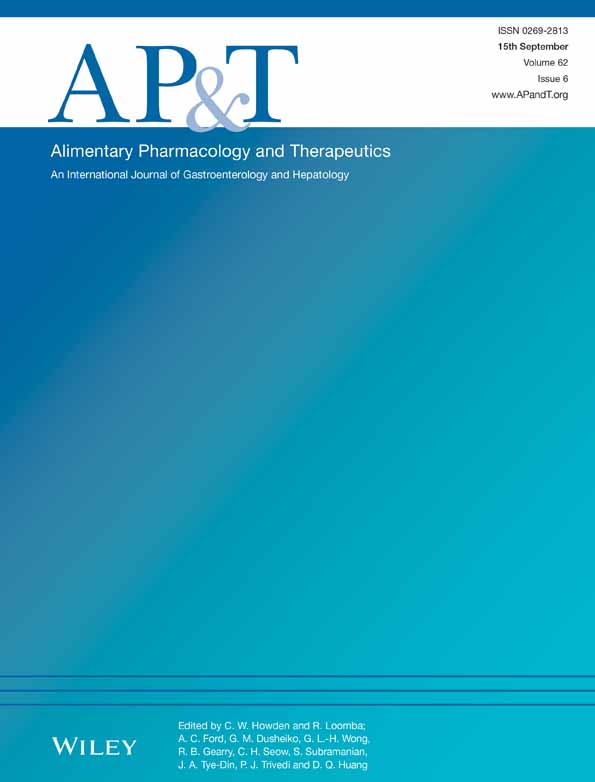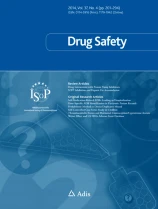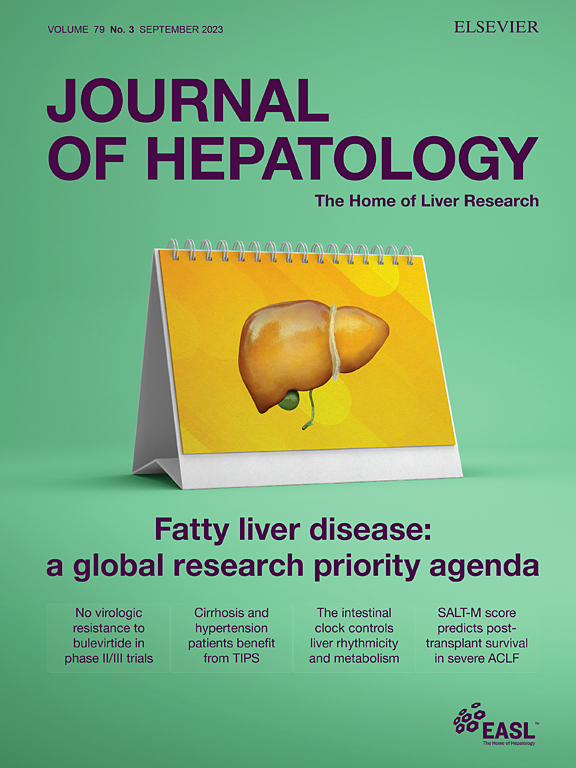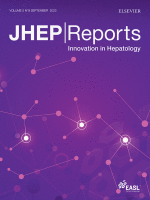
Unveiling Drug-Induced Autoimmune-Like Hepatitis in Autoimmune Hepatitis Patients: A Multicenter Retrospective Study
Arvaniti P, Olivas I, Pascual-Dapena A, Riveiro-Barciela M, Esteban P, Aguilar A, Pérez-Medrano I, Horta D, Caballero Marcos A, Salcedo M, Conde I, Gómez E, Castelló I, Bárbara JS, Díaz-González Á, Del Barrio M, Lorente S, Mateos B, Arencibia A, Jiménez M, Cuenca P, Bernal-Monterde V, Fernández EM, Rodríguez-Tajes S, Pocurull A, Hernández-Évole H, Forns X, Andrade RJ, Londoño MC. Aliment Pharmacol Ther. 2025 Aug 26. doi: 10.1111/apt.70353. Epub ahead of print. PMID: 40857202.

Intestinal permeability and immune-inflammatory markers in patients with idiosyncratic drug-induced liver injury, drug-induced steatosis and metabolic dysfunction-associated steatotic liver disease (MASLD).
Di Zeo-Sánchez DE, Díaz-Alberola I, Pinazo-Bandera JM, García-Cortés M, Sanabria-Cabrera J, Robles-Díaz M, Álvarez-Álvarez I, Lucena MI, Andrade RJ, Villanueva-Paz M, Stephens C. Br J Pharmacol. 2025 Jun 25. doi: 10.1111/bph.70123. Epub ahead of print. PMID: 40562415.

Short communication: miRNA122 interrogation via PCR-Free method to track liver recovery
Marín-Romero A, Di Zeo-Sánchez DE, Tabraue-Chávez M, Villanueva-Paz M, Pinazo-Bandera JM, Sanabria-Cabrera J, García-Cortés M, Díaz-Mochón JJ, Lucena MI, Andrade RJ, Stephens C, Pernagallo S. PLoS One. 2025 May 30;20(5):e0324858. doi: 10.1371/journal.pone.0324858. PMID: 40445883

Reply to: “Distinction of autoimmune hepatitis from drug-induced autoimmune like hepatitis: The answer lies at the interface”
Björnsson ES, Lucena MI, Andrade RJ. J Hepatol. 2024 Mar 28:S0168-8278(24)00221-6. doi: 10.1016/j.jhep.2024.03.037. PMID: 38554848.

Control Compounds for Preclinical Drug-Induced Liver Injury Assessment: Consensus-driven systematic review by the ProEuroDILI Network.
Antonio Segovia-Zafra, Marina Villanueva-Paz, Ana Sofia Serras, Gonzalo Matilla-Cabello, Ana Bodoque-García, Daniel Di Zeo-Sánchez, Hao Niu, Ismael Álvarez-Álvarez, Laura Sanz-Villanueva, Sergej Godec, Irina Milisav, Pierre Bagnaninchi, Raúl J. Andrade, M Isabel Lucena, José C. Fernández-Checa, Francisco Javier Cubero, Joana P. Miranda, Leonard J. Nelson. PMID: 38703829
Journal of Hepatology 2024: 81:630-640. doi: 10.1016/j.jhep.2024.04.026.

Drug-Induced Liver Injury in the Elderly: Consensus Statements and Recommendations from the IQ-DILI Initiative
Eric B. Cohen · Meenal Patwardhan · Ritu Raheja · David H. Alpers · Raul J. Andrade · Mark I. Avigan ·James H. Lewis · Don C. Rockey · Francis Chui · Alexandru M. Iacob · Camila C. Linardi · Arie Regev · Jesse Shick · M Isabel Lucena. PMID: 38217833
Drug Safety 2024. https://doi.org/10.1007/s40264-023-01390-5

Roadmap to DILI research in Europe. A proposal from COST action ProEuroDILINet
Lucena MI, Villanueva-Paz M, Alvarez-Alvarez I, Aithal GP, Björnsson ES, Cakan-Akdogan G, Cubero FJ, Esteves F, Falcon-Perez JM, Fromenty B, Garcia-Ruiz C, Grove JI, Konu O, Kranendonk M, Kullak-Ublick GA, Miranda JP, Remesal-Doblado A, Sancho-Bru P, Nelson L, Andrade RJ, Daly AK, Fernandez-Checa JC.
Pharmacol Res. 2024;200:107046. doi: 10.1016/j.phrs.2023.107046. PMID: 38159783.

Nomenclature, diagnosis and management of drug-induced autoimmune-like hepatitis (DI-ALH): An expert opinion meeting report.
Andrade RJ, Aithal GP, de Boer YS, Liberal R, Gerbes A, Regev A, Terziroli Beretta-Piccoli B, Schramm C, Kleiner DE, De Martin E, Kullak-Ublick GA, Stirnimann G, Devarbhavi H, Vierling JM, Manns MP, Sebode M, Londoño MC, Avigan M, Robles-Diaz M, García-Cortes M, Atallah E, Heneghan M, Chalasani N, Trivedi PJ, Hayashi PH, Taubert R, Fontana RJ, Weber S, Oo YH, Zen Y, Licata A, Lucena MI, Mieli-Vergani G, Vergani D, Björnsson ES; IAIHG and EASL DHILI Consortium.
J Hepatol. 2023 Sep;79(3):853-866. doi: 10.1016/j.jhep.2023.04.033.

Abstract#668 A systematic review of control
compounds tested for validation of Drug-Induced Liver Injury (DILI) in vitro models

Case Report. Herb-Induced Liver Injury by Ayurvedic Ashwagandha as Assessed for Causality by the Updated RUCAM: An Emerging Cause.
Bokan G, Glamočanin T, Mavija Z, Vidović B, Stojanović A, Björnsson ES, Vučić V.
Pharmaceuticals (Basel) 2023 Aug 10;16(8):1129. doi: 10.3390/ph16081129.
Summary: In recent decades, there has been a rising interest in herb-induced liver injury (HILI) caused by natural products, herbal supplements, or herbal products used in traditional medicine. In contrast to DILI, which a single well-chemically characterized chemical agent causes, HILI is triggered by a chemical mixture of several constituents.
Ashwagandha (Withania somnifera) is a plant belonging to the Solanaceae. Although it is generally well-tolerated, several recent cases have reported ashwagandha-associated liver injury. Here, In addition to reporting two new cases of ashwagandha-induced liver injury, we performed a comprehensive review of the literature on liver injury associated with ashwagandha supplements, as presented below.
These reports support that consuming ashwagandha supplements is not without its safety concerns.

Protocol. Study design for development of novel safety biomarkers of drug-induced liver injury by the translational safety biomarker pipeline (TransBioLine) consortium: a study protocol for a nested case-control study.
Grove JI, Stephens C, Lucena MI, Andrade RJ, Weber S, Gerbes A, Bjornsson ES, Stirnimann G, Daly AK, Hackl M, Khamina-Kotisch K, Marin JJG, Monte MJ, Paciga SA, Lingaya M, Forootan SS, Goldring CEP, Poetz O, Lombaard R, Stege A, Bjorrnsson HK, Robles-Diaz M, Li D, Tran TDB, Ramaiah SK, Samodelov SL, Kullak-Ublick GA, Aithal GP; TransBioLine consortium.
Diagn Progn Res. 2023 Sep 12;7(1):18. doi: 10.1186/s41512-023-00155-z.
Summary: A lack of biomarkers that detect drug-induced liver injury (DILI) accurately continues to hinder drug development and remains a challenge in clinical practice. The Innovative Medicines Initiative’s TransBioLine consortium comprising academic and industry partners is developing a prospective repository of deeply phenotyped cases and controls with biological samples during liver injury progression to facilitate biomarker discovery, evaluation, validation and qualification.
Patients who meet specific criteria are enrolled and adjudicated by a committee. Candidate biomarkers prioritised for evaluation include osteopontin, glutamate dehydrogenase, cytokeratin-18 (full length and caspase cleaved), macrophage-colony-stimulating factor 1 receptor and high mobility group protein B1 as well as bile acids, sphingolipids and microRNAs. Then, TransBioLine project is helping to improve detection, diagnostic accuracy and prognostication of DILI in premarketing clinical trials and in clinical healthcare application.

Original article. Clinical presentation, causative drugs and outcome of patients with autoimmune features in two prospective DILI registries.
García-Cortés M, Ortega-Alonso A, Matilla-Cabello G, Medina-Cáliz I, Castiella A, Conde I, Bonilla-Toyos E, Pinazo-Bandera J, Hernández N, Tagle M, Nunes V, Parana R, Bessone F, Kaplowitz N, Lucena MI, Alvarez-Alvarez I, Robles-Díaz M, Andrade RJ.
Liver Int. 2023 Aug;43(8):1749-1760. doi: 10.1111/liv.15623.
Summary: Idiosyncratic drug-induced liver injury (DILI) with autoimmune features is a liver condition with laboratory and histological characteristics similar to those of idiopathic autoimmune hepatitis (AIH), which despite being increasingly reported, remains largely undefined.
This article aimed to describe in-depth the features of this entity in a large series of patients from two prospective DILI registries.
DILI with autoimmune features shows different clinical features than DILI patients lacking characteristics of autoimmunity. In addition, certain drugs such as statins, nitrofurantoin and minocycline, play a relevant role as causative agents. Higher transaminases and total bilirubin values with no eosinophilia at presentation increase the likelihood of relapse in DILI with autoimmune features. As the tendency to relapse increases over time, these patients will require long-term follow-up.
Review. Drug-induced cholestasis: causative agents and challenges in diagnosis and management.
Jose M. Pinazo-Bandera, Juan Pedro Toro-Ortiz, Raúl J. Andrade, Miren García-Cortés. Explor Dig Dis. 2023;2:202–222. DOI: https://doi.org/10.37349/edd.2023.00027

Original article. Tandem mass tag-based quantitative proteomic profiling identifies candidate serum biomarkers of drug-induced liver injury in humans.
Ravindra KC, Vaidya VS, Wang Z, Federspiel JD, Virgen-Slane R, Everley RA, Grove JI, Stephens C, Ocana MF, Robles-Díaz M, Isabel Lucena M, Andrade RJ, Atallah E, Gerbes AL, Weber S, Cortez-Pinto H, Fowell AJ, Hussaini H, Bjornsson ES, Patel J, Stirnimann G, Verma S, Elsharkawy AM, Griffiths WJH, Hyde C, Dear JW, Aithal GP, Ramaiah SK.
Nat Commun. 2023 Mar 3;14(1):1215. doi: 10.1038/s41467-023-36858-6.
Summary: This article identifies, confirms, and replicates by mass spectrometry the biomarker performance characteristics of candidate proteins in patients with DILI and acute non-DILI at onset and follow-up, and healthy volunteers.
Fructose-1,6-bisphosphatase 1, alone or in combination with glutathione S-transferase A1 and leukocyte cell-derived chemotaxin 2, could potentially assist in clinical diagnosis by distinguishing non-DILI at onset and DILI at onset.
If the diagnostic and prognostic performance of these biomarkers is validated in an independent large case-control study, could pave the way for a step change in clinical practice as well as in monitoring for DILI in clinical trials

Research article. Incidence, risk factors and outcomes of checkpoint inhibitor-induced liver injury: A 10-year real-world retrospective cohort study
Edmond Atallah, Sarah J. Welsh, Brent O’Carrigan, Ana Oshaughnessy, Igboin Dolapo, Andrew S. Kerr, Joanna Kucharczak, Colin Y.C. Lee, Colin Crooks, Amy Hicks, Chenchu Ramu Chimakurthi, Ankit Rao, Hester Franks, Poulam M. Patel, Guruprasad P. Aithal.
JHEP Reports 2023; 5 (10): 100851. https://doi.org/10.1016/j.jhepr.2023.100851
Summary: This article aimed to determine the incidence rate and risk factors associated with an entity that accounts for increasing numbers of DILI cases, the checkpoint inhibitor-induced liver injury (ChILI).
Combination of therapy, female sex, higher baseline alanine transferase level and lower baseline alkaline phosphatase level were independently associated with higher risk of ChILI.
The real-world risk of ChILI is higher than previously reported. Among patients receiving dual CPI, this risk falls markedly after 4.5 months. As Common Terminology Criteria for Adverse Events overestimates its clinical severity, case-definition, evaluation and management of ChILI should be revised to harmonise care.